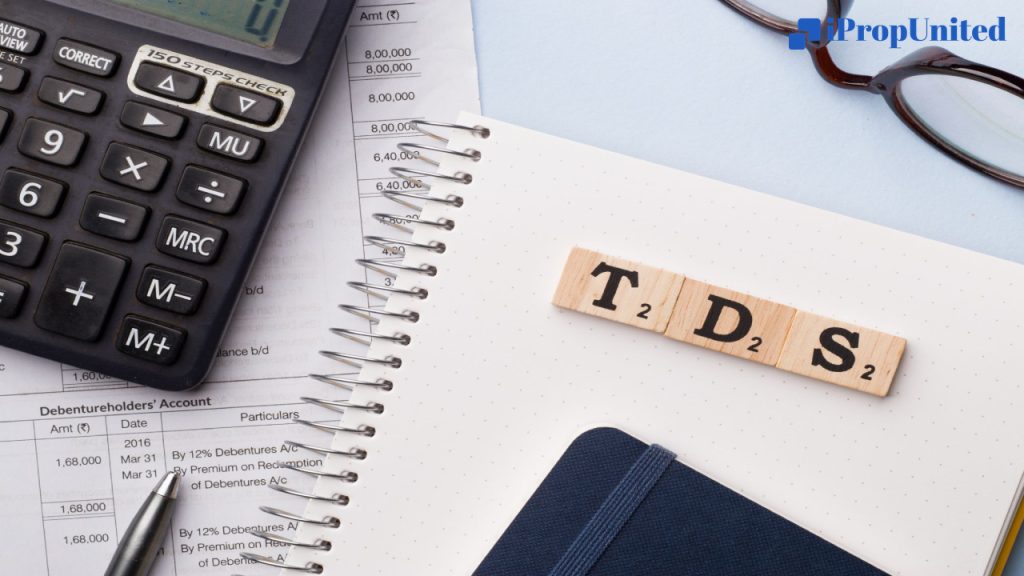What does 194-IA of the Income Tax entail?
According to Section 194-IA of the Income-Tax Act, a buyer must deduct and submit 1% of the transaction cost as TDS if the property is worth more than Rs 50 lakh. Contrarily, Section 194-IA does not specify which sum should be used to compute TDS on real estate sales when the stamp duty value and the actual selling price of the property differ.
The government-established circular rates, which are used to determine stamp duty on the transaction, cannot be used to register a property. The market value of the property could be higher or lower than the amount of stamp duty. In such a case, the buyer would have to determine TDS on the property sale based on the higher valuation, per the notification from February 1, 2022.

The Act’s Section 194-IA permits the tax on payments made in connection with the transfer of certain types of movable property other than agricultural land to be deducted. Any person responsible for paying to a resident any sum as consideration for the transfer of any immovable property (other than agricultural land) is allowed by subsection (1) of the said section to deduct tax at the rate of 1% of such sum as income-tax thereon at the time of crediting or paying such a sum to the resident. The Memorandum to the Budget 2022 states that when the consideration for the transfer of immovable property is less than Rs 50 lakh, no tax deduction shall be provided under Subsection (2).
Deduction of TDS
“TDS is to be deducted on the sum paid by the transferee to the transferor in accordance with the terms of the aforementioned section.” The stamp duty value of the immovable property is not taken into account in this section, but Sections 43CA and 50C of the Act mandate that it be used when calculating income under the headings “earnings and gains from business or profession” and “capital gains,” respectively. Thus, the provisions of Section 194-IA, as well as Sections 43CA and 50C of the Act, are in conflict,” it continues.
The document continues, “To remove inconsistency, it is proposed to amend Section 194-IA of the Act to provide that, in the case of transfer of an immovable property (other than agricultural land), TDS is to be deducted at the rate of 1% of such sum paid or credited to the resident or the stamp duty value of such property, whichever is greater.
If the consideration paid for the transfer of immovable property and the stamp duty value of that property are both less than Rs 50 lakh, Section 194-IA exempts the transfer from tax deduction requirements.
What is TDS and who is responsible for deducting it?
The government of India passed legislation requiring the buyer of a property to deduct tax at source when paying the seller for his property in order to combat the pervasive use of unaccounted money in immovable property transactions. Tax deducted at source, or TDS, was introduced with the intention of collecting tax right where the money came from.
A person (deductor) who is required to make a specific payment to another person (deductee) is required by law to withhold tax at the source and remit it to the federal government. In actuality, this implies that it is the buyer’s responsibility to withhold TDS from property transfers. Using Form 26AS or a TDS certificate provided by the buyer, the seller, whose income has had tax deducted at source, is entitled to a credit for the amount deducted.
There will be a penalty imposed on the parties to the transaction if they don’t fulfill this obligation. The buyer could face criminal charges if he doesn’t deduct the required TDS and report it to the authorities.
How should TDS be paid and when should it be deducted?
If an advance is received before the execution of the conveyance deed, the TDS must be withheld either at the time the conveyance deed is executed or when the advance is paid. The purchaser has 30 days from the end of the month in which the tax is deducted to deposit the TDS amount to the credit of the central government. To pay the TDS and provide additional information, you must complete Form-cum-challan No. 26QB. You must fill out a separate Form 26QB for each pair of buyers and sellers if there are several interested parties or sellers for a given property. All buyers’ and sellers’ information must be included on each Form 26QB.
TDS: Important factors for the purchaser
- Subtract 1% or 0.75% TDS, depending on the date of payment, from the selling price.
- Get the seller’s PAN and cross-check it with the original PAN card.
- You’ll also need your PAN to pay TDS.
- Avoid any errors while filling the PAN or other details in the online form.
- To resolve the situation, you must contact the Income Tax Department.
The most crucial aspects of TDS to understand
- Buyers of property worth more than Rs 50 lakhs are required to deduct and pay TDS to the government.
- Only the purchasers are responsible for deducting and submitting TDS.
- The buyer will be responsible to the authorities in the event of any misappropriation. Buyers must submit Form 26QB in order to credit TDS.
- If there are multiple buyers or sellers, separate forms must be filled out for each party.
Follow and Connect with us: Twitter, Facebook, Linkedin, Instagram







